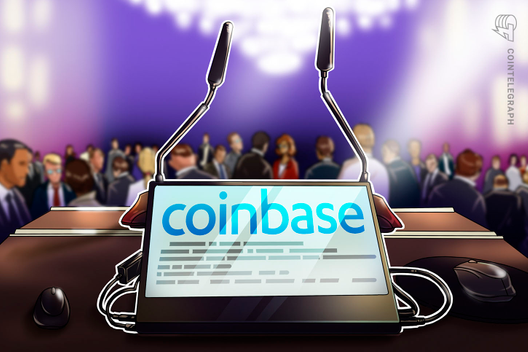Could DeFi-powered banks become an unstoppable force in finance?

For decades, a lack of innovation has stifled the banking sector. We still live in a world where cross-border payments can take several days, and inefficient algorithms deny loans to consumers who can afford to pay them back — all because they don’t fit inelastic requirements that aren’t reflective of the 21st century.
It’s been interesting to see how new concepts and key milestones in digitization have been pioneered by so-called “challenger banks.” These institutions, often fronted by fresh-faced financiers who previously worked at old-fashioned institutions, have seen how customers end up drowning in fees.
As you will have seen in countless articles on Cointelegraph, DeFi has been touted as the silver bullet that tackles the inherent flaws in the banking sector. Some experts even claim that decentralized finance protocols have an opportunity to render banks obsolete. Although DeFi isn’t without promise, this thriving corner of the crypto market is grappling with its own unique set of problems.
Countless millions of people who could benefit from the flexibility that DeFi provides end up being shut out because many platforms are too complex and inaccessible. There’s no interoperability with other blockchains, let alone with traditional banking providers. Some teams lack the experience needed to take their concepts global, and despite what their names suggest, a fair number of projects are more centralized than they ought to be.
The challenges don’t end here for those consumers who do end up learning how to use a DeFi protocol. They can be left scratching their heads by how loans need to be overcollateralized. Worse still, low levels of liquidity can also deny them any chance of getting the best deal — another symptom of DeFi’s fragmented landscape.
Joining forces?
Overall, an “either or” narrative appears to have emerged. There’s a notion that banks and DeFi are like oil and water. However, this doesn’t necessarily have to be the case. When done well, both of these sectors could actually benefit one another — delivering far greater levels of choice to consumers, not to mention better outcomes.
A collaboration means that banks get much-needed support when it comes to modernizing antiquated systems and updating the suite of services that they offer. Meanwhile, DeFi protocols benefit from a usability perspective — accessing the interfaces that most consumers are already accustomed to. Combining the best of both worlds also gives decentralized finance protocols a chance to reach a broader cross-section of customers, including those who may have felt shut out beforehand.
DeFi platforms that partner with a licensed bank can support fiat currencies and digital assets alike — spanning USD, GBP, EUR, CAD, CHF and ETH, Wrapped Bitcoin and stablecoins. Fees can be dramatically reduced, and a more seamless on-ramp from fiat to crypto serves as a much-needed boost for adoption.
Greater levels of integration mean that consumers can access multi-currency bank accounts and credit cards where all of their assets are listed side by side. Long gone would be the days where a crypto enthusiast needs to log into one account to check their bank balance, and switch to an exchange app to see how their digital assets are faring.
Crucially, this licensed environment doesn’t need to be at the expense of what makes DeFi protocols special — the community. Members of an ecosystem can still vote on the new tokens and asset types they would like to be listed, as well as other governance matters. And all of the best-known features that have contributed to $76.4 billion in total value locked on these protocols, including yield aggregators and loans with fixed terms and variable rates, would continue to be available.
Turning this into reality
One project that aims to bring such an ambitious vision to life is EQIFI. It all began with a conversation in 2019 between Jason Blick and Brad Yasar, who now serve as chairman and CEO respectively. Fast forward to now, and more than $10 million has been raised through strategic partnerships, and four key products are due to be rolled out in June. These comprise fixed-rate loans, variable-rate loans, interest rate swaps and a yield aggregator — all designed to meet the needs of lenders, borrowers and investors across the globe.
“Our vision for EQIFI is to create a gateway between decentralized finance and digital banking that simplifies the bidirectional value flow. In success, we see this as an excellent opportunity to bring the two worlds together and allow masses to access these next-generation financial products,” Blick said.
EQIFI is due to integrate with a banking platform in the second quarter of 2021, as well as complete security audits. Throughout the year, work is also continuing on building its suite of products — including a yield aggregator, fixed-term and variable-rate loans.
A token generation event is scheduled to take place at the end of June, and the company’s goal is to secure multi-chain adoption thereafter. One of the project’s main priorities is ensuring that its infrastructure is easily accessible for users who are based on mobile devices — with a user interface that’s easy to navigate and understand.
Right now, EQIFI argues that legacy software is holding many banks back. Equally, DeFi protocols are often unfairly tarnished with a view of being unregulated and in the “Wild West” of crypto. It believes that amalgamating the old with the new can usher in a new wave of innovation that ramps up competition in the finance sector, ensures payments are cheaper and more immediate, and delivers better terms for everyday consumers.
Learn more about EQIFI
Disclaimer. Cointelegraph does not endorse any content or product on this page. While we aim at providing you all important information that we could obtain, readers should do their own research before taking any actions related to the company and carry full responsibility for their decisions, nor this article can be considered as an investment advice.









